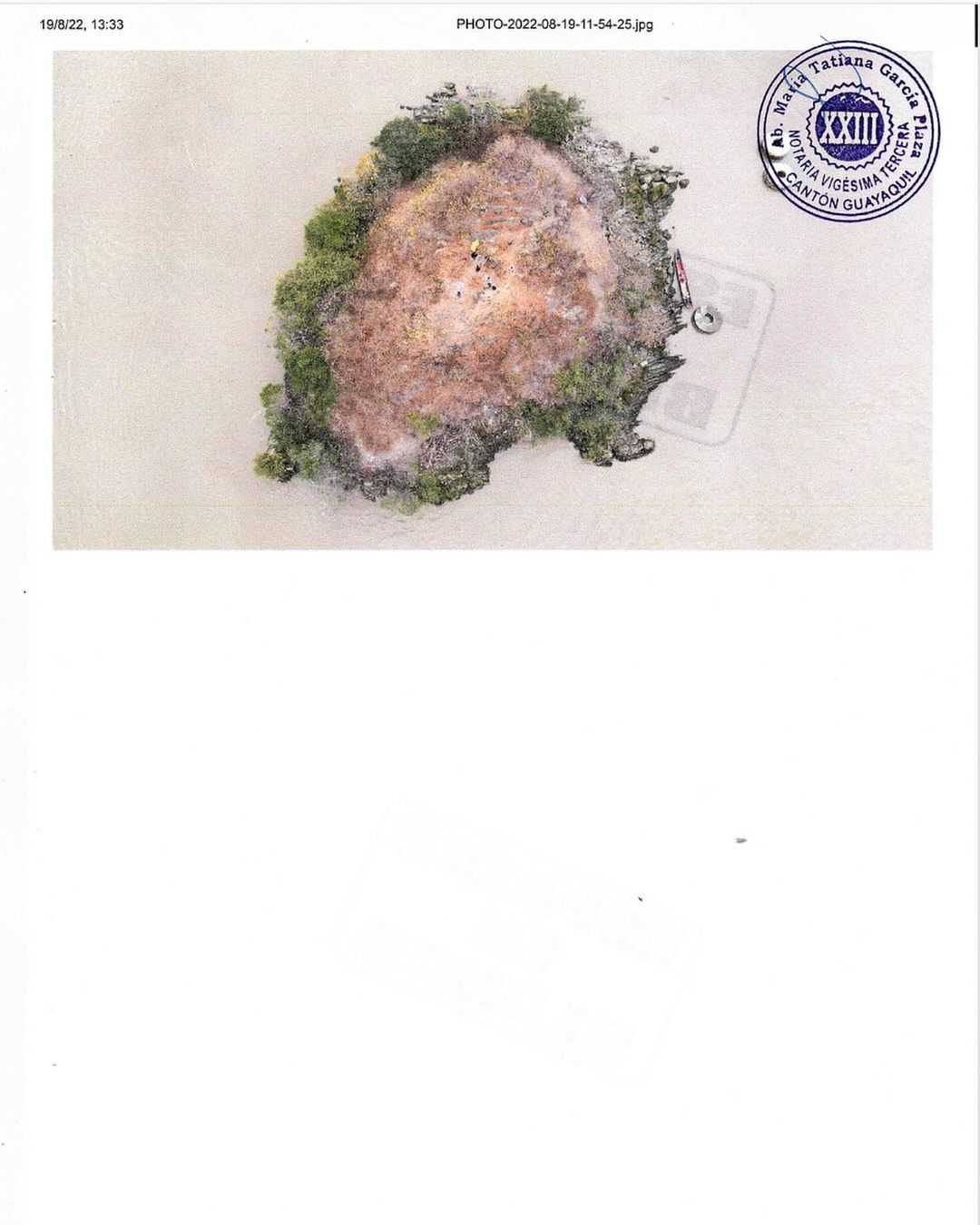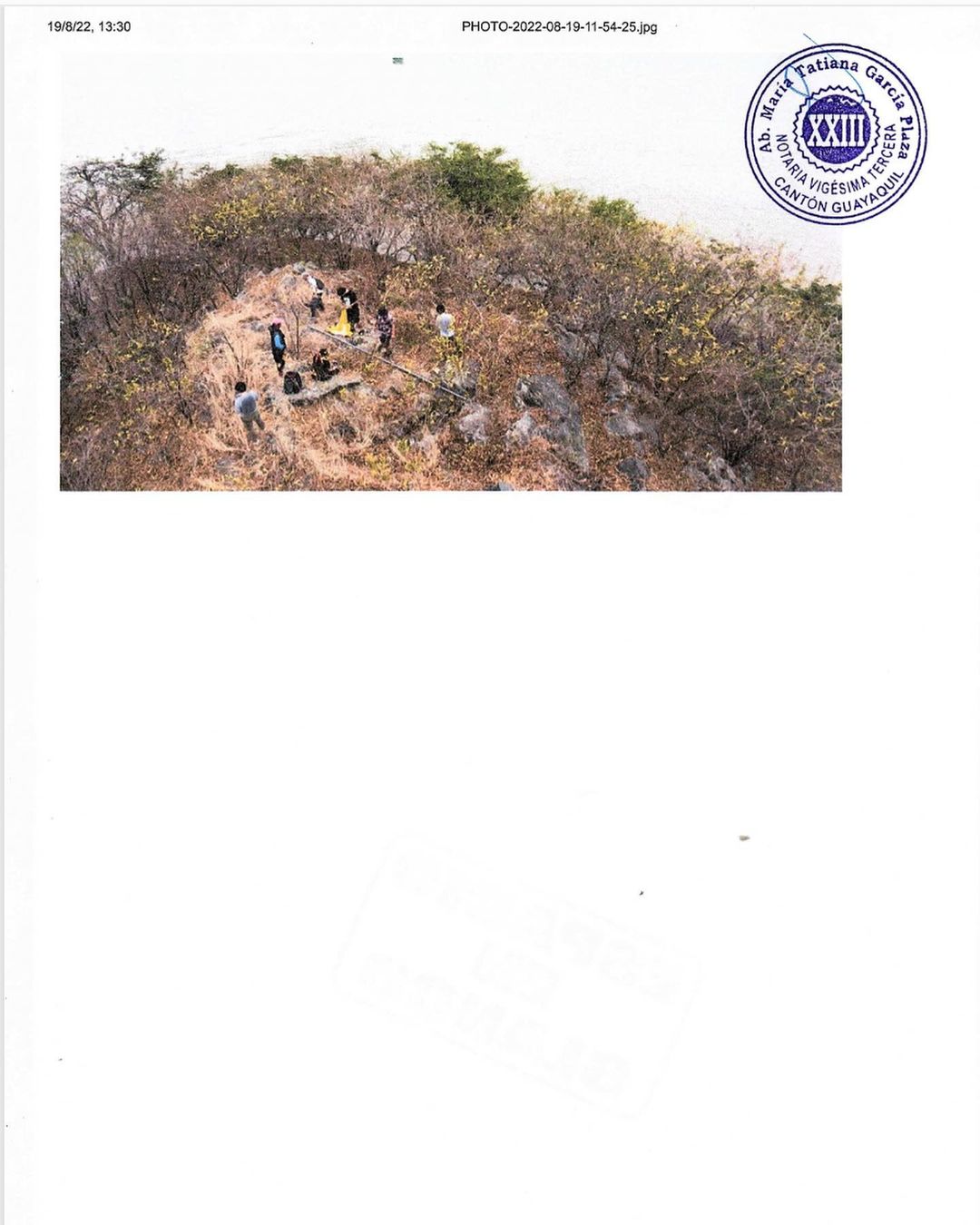Residency: June-August, 2022
Mentor: Daniella Géo
Leo Moyano is an Ecuadorian artist based in Guayaquil.
During his residency at tropical papers, Leo Moyano conceived and realised the project, “How to Occupy a Space That Does Not Exist”, born out of the uncertainty of how invisible spaces are created by political and governmental mismanagement.
This cycle of residency was supported by @eacheve and @artus_conexionglobal Ecuador, which through a jury selected Moyano as the 2022 resident at tropical papers.
POSTED: @tropicalpapers_03.10.2022 to 11.11.2022
In Guayaquil, the city where I live and the main port of Ecuador, we see spaces or land that are solidifying in the middle of the Guayas River, an important tributary of the port area. Chain effect: with the deforestation came the erosion of the hills and, due to the effect of the rains, the earth and mud fell into the rivers that flow into the Guayas causing small mounds that were then formed. With almost 50 years of neglect and precariousness, this resulted in large plots of land.
The political propaganda related to this problem has been present for several years. As in previous governments, they have wanted to dredge the river, they have failed continuously and day by day the islets consolidate, blocking the navigation of large vessels. Interrupting also the image of Guayaquil in our collective memory. Guayaquil was considered one of the great shipyards of the entire colonial and republican period, removing with this a tradition that is blurred every day. These islets, which we can visit today, still do not have a territorial status. On the contrary, they are disputed by the municipalities of Guayaquil and Duran, previously connected by a bridge.
To whom do these new spaces belong?
The speedboats that serve as a means of maritime transportation in the gulf of Guayaquil are used to go to different places or towns near city. It starts from a busy point that is known as the sector of the caraguay market in the center of south of the city. This time we embarked on the boat of the artisanal fisherman Don Chicho la orilla. Once on board, we headed for the islet. Due to the high tide and the strong currents, we had to take a different course. The route was to sail close to Santay Island, a place located in front of Guayaquil, occupied by a community of fishermen that also serves as a sanctuary for endemic and native birds and animals of the entire coastal edge of the area where we registered a small ecosystem. After almost 25 minutes of travel along the Guayas River we arrived at the small island in which we disembarked.
CONTENT OF THE ACT
The symbolic act of possession of the flag and its placement on this land is born from the idea of consolidating this territory or space that was occupied for a short period of time, leaving as a record of this stay, the flag as a symbol of this temporary occupation.
The idea of proposing this islet as a space where projects can be carried out for short periods of time, is born from the notion of how to occupy these unreal spaces that are formed from the periphery, forming not places or fragments that are in daily view of the city, but in the end do not meet any requirement of existence, are places that denote a forgetfulness and apparently are there without being, pose a city where these spaces are erased, where bad regulations cause them to be generated and at the same time do not exist.
Thus declaring several parameters from the motorization by a lawyer and notary the city of Guayaquil, the act of temporary possession of the islet, which is located at the following coordinates 2°10’56 “S, 79°51’51 “W in the Guayas River.
I propose the list of parameters seen in the images of this publication in order to temporarily occupy the islet. The following guidelines or parameters to follow in case someone else wants to occupy this space. So that the territory should be used for a short period, where artistic interventions can be developed or new resignifications can be proposed from art, migratory concepts, appropriation or from the community and how this is transmuted from different positions, however, without modifying the topography and the ecosystem.
PLACING THE FLAG
With the gesture of hanging the flag, I intend, if not a criticism of the invasive act, to substitute that action as an action from the occupation of that territory. I want to appropriate it for a short period of time and let it follow its own course of life in the ecosystem, without taking possession of it, or physically transforming it into something else.
The design of the flag originated from the first approach I had with the island.
Playing with its white silhouette, I based my design on the theory of color with white as a non-existent or neutral space. The yellow tones, in turn, arise from my production, as a separatist element that at the same time reformulates a territory creating a new one within itself. From the object itself, I resignify the color of the territory, using the color yellow as a color of separation in daily life, just as it is found on maps partitioning spaces. By using these two tones as a metaphor for the division and fragmentation of the island itself, I propose a horizon to it. Perhaps as a way of reflecting on that moment of occupation.
The flag was manufactured by master craftsman Efraín Abad of BANDERINES MILENIUM in downtown Quito. The flagpole is a metal tube of 5m long and a 1m of lace in the ground. Following the dimensions of the flagpole, the flag is 180cm x140cm in diameter, these measures were in relation to the concepts of distance.
To whom do these new spaces belong?
The project, carried out during the Tropical Papers residency, arises not from the island as a concept of property, but as a consequence of the creation of a non-place – located in the middle of a river with a great ecological, socioeconomic, political, cultural, and affective function, such as the Guayas River.
Witnessing how these uninhabited spaces that are not registered in maps are constructed and formed. Birds, fish and some mammals of the area transit these shores, these lands, where nothingness is present from the human. In one way or another, started to form part of the landscape in Guayaquil. A landscape that i changes with time and the precariousness of its context.
The approaches then come out of how to settle in a territory that “does not exist” geographically. How to settle without being a colonizer, but an occupant of this public space.
Consolidating myself from that scoop while positioning myself in this space, I have placed a flag that has historically been a symbolic object of claiming a territory for someone. This action does not intend to strengthen the colonizing criteria, nor of conquest, but to rethink them in a current period, re-signifying. I oppose, through artistic action, the sense of invasion as an illegal act and of temporary occupation as an action validated by the notion of citizen’s right. That is, the occupation of one of these spaces without social function that could still be considered public. Questioning whether that non-place is still that or becomes a place. Appropriating it for a short period of time and letting it follow its own course and life of the ecosystem, without taking possession of it, or transforming it physically into something else.
With the action of crossing the river, choosing an island and, above all, with the gesture of planting a flag on it, I occupy the space of solidified earth with a surface of 55.8 m2, located at the coordinates 2 10 56″ S 79 51 51″ W.
I created a place with its own rules where each artist can locate and take possession of it to continue building a meaning from that context, without interfering in its topography and ecosystem.











